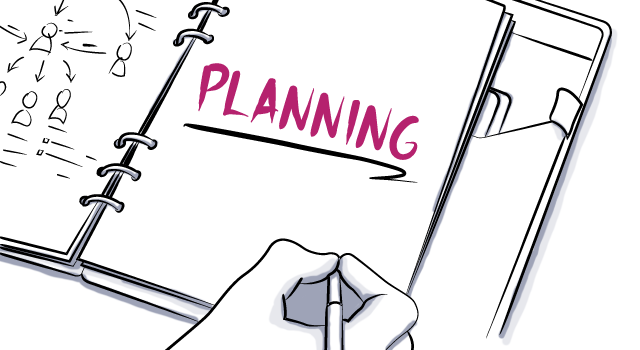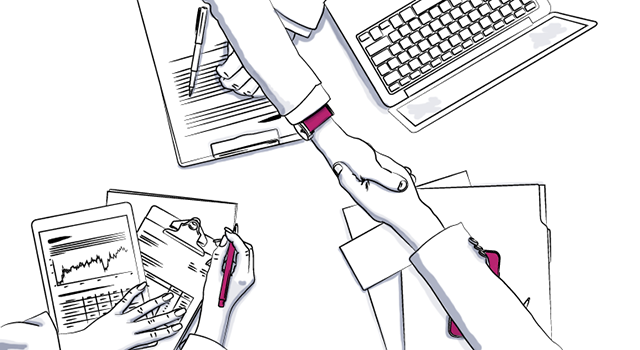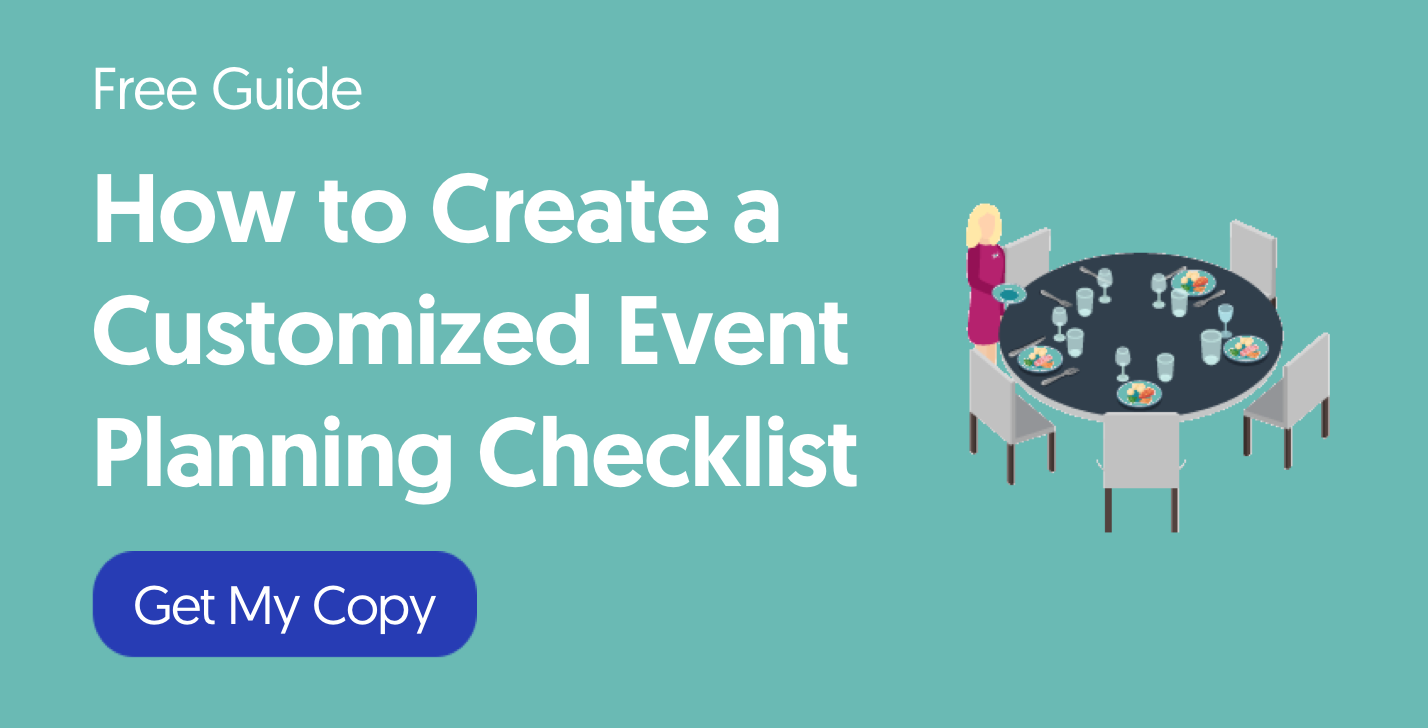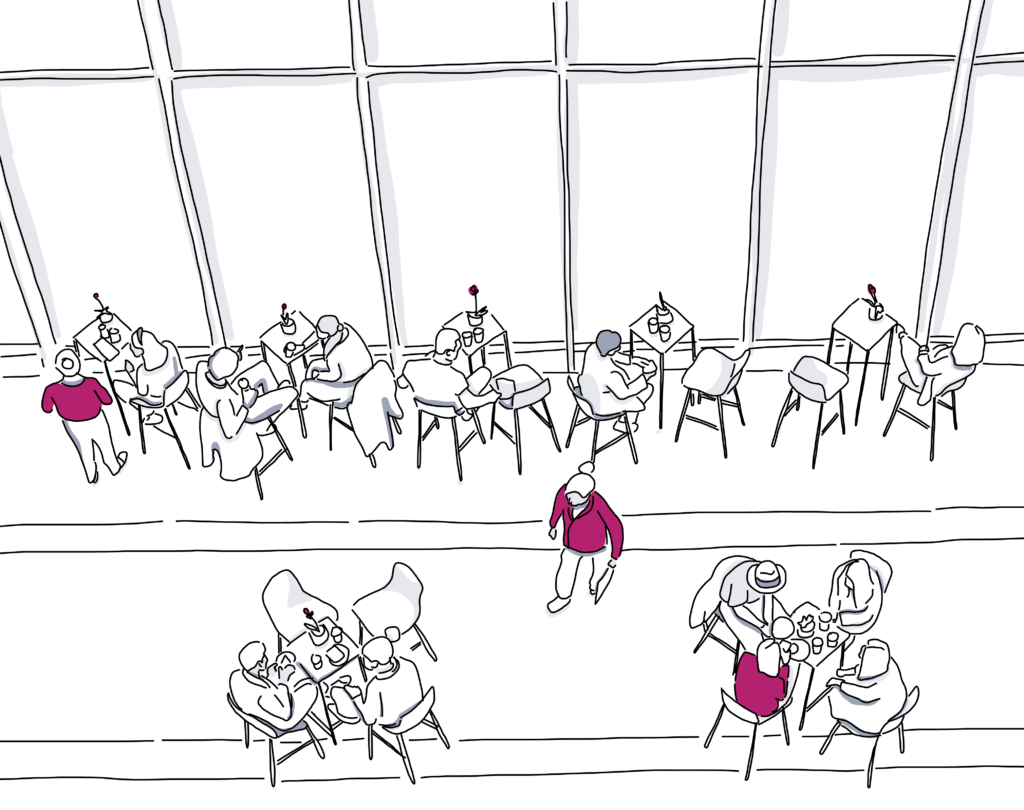
Tips Tuesday: 27 Top Timesaving Event Planning Tricks
How can an event planner improve? With some great timesaving event planning tips and tricks of course! We’ve gathered 27 of the most creative and effective productivity strategies known to the modern event planner in this list of ideas that will surprise, inspire, and, ultimately, inform your event process.
Pick up new timesaving event planning secrets

1. Have rules regarding last minute event or contract changes.
Although there are plenty of ways to handle last minute event changes, prevention is key. So in your contract, make sure you include rules for what happens when significant changes occur 1-3 months out, 1-4 weeks out, and the day of-1 week out. Also be sure to get your scope of work in writing too.
2. Test drive new staff at smaller events.
Working with event staff is a skill unto itself. Don’t put new hires on staff for your most important events until you’ve seen how they can perform at smaller, less intense ones at least once.
3. Send deadline reminder memes to partners, sponsors, and teams.
Memes have a scientifically proven effect on the human brain. So even though everyone secretly hates your friendly reminder emails, adding a meme can help trigger the memory forming centers of our brains (because by definition a meme is assigning meaning to an otherwise meaningless image) and help participants feel a greater sense of community having participated in (or at least can recognize) the almost tribal like sharing that led to them knowing this particular bit of micro information.
4. Make event vendors pay late fees.
Nothing lights a fire under a person quite like throwing good money away. Set your event vendors up with the same late fee parameters and figures that you use with your clients (the size of the fee doesn’t matter; it’s very existence should be enough to strike fear into their hearts).
5. Use chatbots to communicate with event attendees.
Use chatbots before your event to establish your event brand voice and tone, provide customer service support, and gather data on your audience through things like polls or surveys.
6. Create event staff training videos.
In the week leading up to the event, send a link to a password protected video set that staff can review (and preferably be quizzed on) that preps them for the big day. Here are some ideas for using employee training videos that you directly apply to your event.
7. Funnel all your event social media feeds into one platform.
Tools such as Buffer, HootSuite, and Everypost consolidate multiple channels into a single dashboard so you can have a bird’s eye view of what content you’re distributing and how your event audience is reacting to it without toggling between a half dozen sites.
8. Get an all-in-one event management tool.
The best event management software options should help you accomplish tasks like: build your budget, search for event venues, designing your floor plan or layout, collaborate with key stakeholders, and help market the event itself.
9. Set up texting from your computer.
It’s really distracting to have to simultaneously monitor emails on your desktop and messages on your phone, so try keeping them all in one place instead. If you already have a Mac, you can probably use iMessage. But if you have a PC or are communicating with someone who doesn’t have an Apple phone, just follow these instructions.
10. Centralize event communications.
The average person spends 28% of the whole work day just sending and answering emails. Save you and your entire team that chunk of time by implementing a single event services solution where you all can share documents, consolidate message threads, and get real time updates on project statuses without ever opening your inbox.
11. Let face analysis software do market research for you.
Facial recognition can be used to reduce manual event guest check ins, enhance event security, create programming heat maps, and neatly gather on new leads.
12. Organize your to do list by urgency and importance.
Nicknamed the Eisenhower Matrix, this useful graphic can help you tidy up your to do list and tackle only the most important tasks first (i.e. the ones that are both urgent and important).
13. Assign an informed tie breaker within the company.
Disagreements among event stakeholders come up from now and then, but working towards those solutions have the potential to take up a larger chunk of your timeline that you planned for. Make sure your designated decision leader knows all the details of the situation, can make an unbiased observation of both sides, and is good under pressure.
14. Create a highly detailed schedule for your work day.
Plan out activities using 15 minute blocks, remember to schedule breaks, group similar tasks into the same chunks of time.
15. Reject interruptions by blocking off solo work time on your public calendar.
Time blocking in this way helps make sure other team members respect your boundaries while you stay on task.

16. Get order, timing, and document requirements from each of your backup vendors.
If something goes wrong with your vendors it will likely be a last minute issue. So have at least 3 backup choices with all their relevant details available in your event planning binder for every type of vendor your event will need.
17. Do a workflow overhaul.
Tracking what you do every day might lead to better work-life balance but it can also help identify weaknesses in your current process. For example, you might need to delegate more administrative tasks or conduct shorter meetings.
18. Consistently add to a list of potential speakers and presenters for future events.
Collect names of people who are influential in your industry, are great lecturers, or have expressed interest in working with your brand publicly. When it comes time to booking your speakers, you won’t have to spend hours digging through LinkedIn and your contact list to find anyone – just refer to the list!
19. Visualize how you would streamline your process if your current schedule was doubled.
This great psychological exercise forces you to figure out how, in the most high pressure situation imaginable, you could possibly deal with and overcome scheduling challenges that come with completely maxed out workload. It’s pretty much the best way to beat Parkinson’s Law.

20. Make a list of expectations and tasks all your event volunteers will be responsible for (and share it with them ahead of time).
On the day of the event, answering questions and micromanaging event volunteers is way too time consuming. Plus, they’ll really appreciate you preparing for them (it’s one of the best ways to make your volunteers happy).
21. Automate the event check-in process.
Speed up the process by choosing a great event check-in app. Look for user-friendly features that further cut down on the time it takes to train your event staff how to use the program if you want to pack an extra productivity punch.
22. Share desktop screens to your phone.
Tools like Chrome to Mobile make it easy for you to sync all your open tabs from one device to the other, which is helpful when you’re on your way to a meeting, traveling to or from a venue, or simply need to save these particular pages for future viewing later.
23. Wrangle speakers and organize presentations through a single collaborative platform.
Using email to answer speaker questions, approve outlines, and gather photos or bios isn’t efficient, which is why it’s best to use a single tool that brings all your speakers together into one digital area you can oversee.
24. Use an event registration website builder instead of building one from scratch.
Plus, using a customizable solution will make it easier to collect audience information, maintain high security levels, enhance your event strategy, and provide more than enough time saving bonus features to fully round out your new productivity plan.
25. Add a QR scanner to your event app.
Using QR codes for events will make it easier to check people in and it will help your booths or sponsors conduct valuable, lead generating event activities without requiring any additional demands on your schedule.
26. Use templates to create event surveys and polls.
Combine a mobile event survey app with attendee, sponsor, or stakeholder event survey questions.
27. Have an email sorting tool prioritize your inbox for you.
If you have Gmail, give tools like Sortd a try. They help turn your inbox into a to-do list, using customizable columns to organize tasks based on your emails. If you use different email provider, look for an extension that allows you to go beyond basic color coding to provide actually useful organization help.
Even more event planning secrets
If you’d like to find even more ways to be productive as an event planner, try reading up on how to handle common problems and solutions before they come up. You can also save time by using this customizable event checklist or brush up on your email communication skills before your next big project starts to create a well rounded productivity plan.

